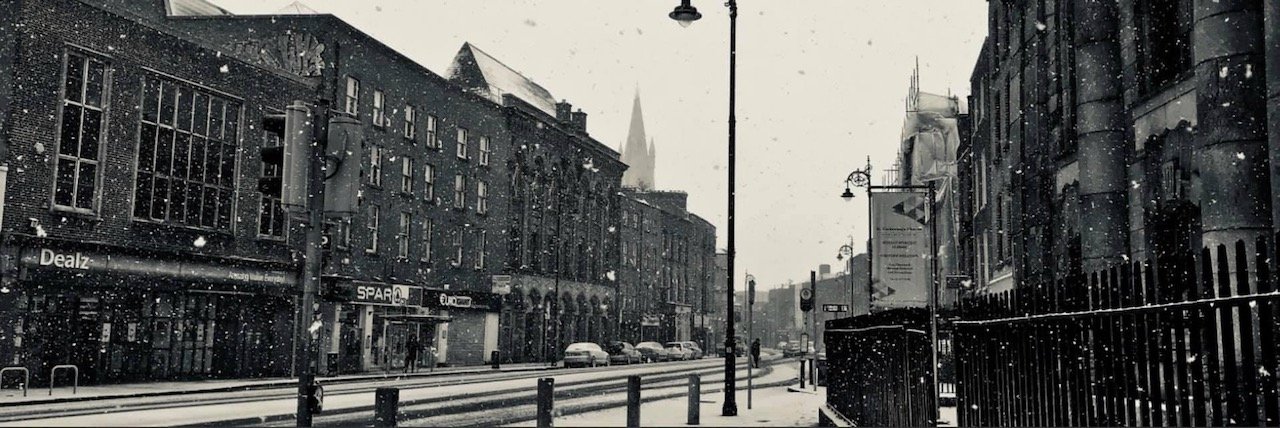Ireland will forever be known as The Land of Saints and Scholars but that saintliness has been eroded, because of the church’s divisiveness…and decimated by the sins of trusted men.
Why we pray for Ireland:
A Glimpse of the NationThe entire island of Ireland (Republic and Northern Ireland) could fit within the state of Indiana, in both area (32,595 sq mi) and population (6,632,316).
Dublin, the capital city, (metro area of 1.9M people) is slated to reach 2.6M, in 10 years.
As of 2016, 82% of Irish people claimed to belong to a Bible-based religion (77% Catholic; 4% Protestant). Of those 4,761,865 counted in the census, just 1% (47,929) of people claimed to be ‘Christian,’ ‘Evangelical,’ or ‘Born-Again.’
The metro area of Dublin, there are some 230 churches in operation. The largest, a Romanian-speaking congregation, has approximately 900 members. The largest English-speaking congregation has roughly 300 members. Most of the other congregations & parishes would have less than 50 members in attendance, on any given Sunday.
While there was a 132,220 person drop among Catholics, from 2011 to 2016, 468,421 Irish people claimed "No Religion" on their census forms—an increase of 198,610 people in the last five years.
Thus, 1 in 10 Irish people say they have no religion, which is a 73.6% increase since 2011. This makes "No Religion" the second largest group in this category behind Roman Catholics.
In 2012, a Gallup poll found Ireland to be one of the "Top Ten Most Atheistic Countries in the World," reporting that 53% of Irish people are irreligious, answering "No" to the question, "Does religion occupy an important place in your life?”
According to the 2011 census, 48,130 people claimed to be Muslim. In 2016, that number rose 29% to 62,032. This makes Islam the fastest growing religion in Ireland; slated to overtake Protestantism as the second largest religion in the country, by 2040.
Scars of the People, A Famine of Hope
Mention to someone, in Ireland, that you are a ‘Christian’ and their first thought (maybe their first words) will be, “Oh, you must be okay with all of the abuse and atrocities committed against women and children, for centuries, by the Church.”
It is a hostile response—but also a fair one.
In 2002, the Boston Globe broke the story of widespread sexual abuse against children within (and covered up by) the Catholic Church and similar findings were subsequently discovered the world over. In Ireland, however, such abuses among women and children were prevalent all over the country.
For generations, every man, woman, & child went to church and the Church was everywhere—looming, among other things, over parishes and public schools. As such, nearly every adult over 30, who has grown up in Ireland, could tell you either a first-hand or second-hand story of a specific event of abuse.
In the 1920s, the Church had also established ‘Mother and Baby Homes’ across Ireland. Young girls who were pregnant, raped, or precocious would be taken to these homes, against their will. Unable to ever leave on their own, they were forced into hard labour and horrifically abused and neglected. Those girls, who arrived pregnant, were properly cared for through to delivery. The babies were then taken from the new mothers and ‘adopted out’ (sold, really) to wealthy, Irish-American couples. This would happen without the young mother’s consent (or knowledge) and, in most cases, these Homes kept separated mothers and children from being able to find each other—even decades afterward.
Children who weren’t taken by couples in the US suffered a harsh existence of neglect, malnourishment, and abuse. In 2017, an investigation into an abandoned Mother and Baby Home, in Tuam, Co. Galway, uncovered a mass grave, containing the skeletal remains of 796 babies and toddlers. To cover up their criminal mistreatment and avoid public scrutiny, the 796 deaths went undocumented and the bodies tossed aside into an underground cistern.
As the last ‘Mother and Baby Home’ was shut down, in 1996, the women who survived these atrocities are now only as young as being in their early 40s…leaving alone the countless children who were born in these places, who have no way to reconnect to their mothers and extended families.
Frankly, the religion that most people have come to know is nothing like Jesus.
In Ireland, most don’t look at the Cross and think about Jesus’ sacrifice, nor do they think about his grace…nor about his unending love for themselves. When they look up at the Cross, what they see is a symbol that has divided their country and abused their children…like the hood ornament on the car that’s been running over their country and people, for generation upon generation. As such, our continued and earnest prayer is that the people—of this country we so dearly love—might come to discover Jesus himself (independent of religious institutions) and, for themselves, realise the peace that he came to give.




